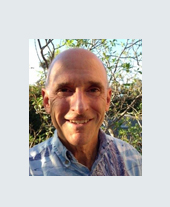 By Andrew Moss
By Andrew Moss
You don’t have to be a poet to breathe new possibilities into an old, familiar metaphor. Recently, for example, author and New York Times columnist Thomas L. Friedman took a well-worn metaphor – the “web” – and reworked it in such a way as to recast the terms of the current presidential campaigns. His take is both provocative and wrong.
In a Times column entitled, “Web People vs. Wall People” (July 27), Friedman declared that the election isn’t so much about Democrats and Republicans as it is about a struggle between what he calls “web people” and “wall people.” The wall people, Friedman argued, seek shelter from the winds of change: from new technologies that continue to replace jobs; from cultural changes brought by new immigrants settling into old neighborhoods; and from continued threats of violence echoing from terrorist attacks around the world. Seeking a sense of stability and community, they turn to a candidate like Donald Trump, who promises them barriers and walls that can shield them from change.
By contrast, “web people” embrace change and the ongoing learning necessary to flourish in a rapidly transforming world. Threatened neither by immigration nor by the kind of “open society” that is propelled by “capitalism, free markets, and open trade,” web people have the potential to help a President Hillary Clinton usher in a vibrant future.
By offering this interpretation of the current presidential contest, Friedman also presented an updated and upbeat picture of the American dream – a picture of the qualities and fearless attitudes that will help individuals succeed in a rapidly changing world. The problem, though, is that the picture doesn’t accord with the facts on the ground.
Look No Further than Walmart
Consider, for example, an entity that can hardly be ignored in any discussion of global capitalism: Walmart. With its 1.5 million U.S. employees and 2.3 million employees worldwide, Walmart is the largest private employer in this country, and one of the largest employers in the world. It’s 11,500 stores and its e-commerce in 11 countries earned the company $482.1 billion in total revenues this year, and it commands a global production chain that manufactures billions of dollars of merchandise, particularly clothing and fashion items, through its relations with factories in such countries as Bangladesh, Cambodia, India, and Indonesia. If any company is web-like in its massive global reach, it is Walmart. But the company hardly presents a picture of an “open system.”
Recently the company raised its minimum wage in the U.S., so that part-time workers make an average of $10.58 per hour, up from from $9.48 last year. This raise came on the heels of widespread press coverage of Walmart employees receiving food stamps and other forms of government assistance in order to get by. High employee turnover, as well as pressure from political leaders and activist groups, were probably other significant factors that pushed against corporate foot-dragging. Yet even with the raise, thousands of part-time Walmart employees still struggle to get sufficient hours to pay their bills, and the new Walmart minimum scarcely comes close to the $15 an hour target seen by many as a living wage baseline today.
Walmart’s presence on the international stage is hardly more benign. With its power to shift production from one supplier to another in various countries, Walmart can drive prices and wages down without bearing direct responsibility as the employer of record. In Cambodia, for example, the Asia Floor Wage Alliance (AFWA), an umbrella organization representing a broad coalition of trade unions and human rights organizations, reported that workers in factories supplying Walmart and other brands were being compensated at levels significantly below what constituted a living wage, i.e. a wage needed to sustain themselves and their families with the essentials of life. When Cambodian workers appealed directly to Walmart for higher wages, those appeals went unheeded, and a strike for a higher minimum wage was violently suppressed by the Cambodian government.
In Reality, Oliver Twist
These facts throw into sharp relief the wealth of the Walton family, who collectively own about half the stock of the company. Their wealth amounts to $130 billion, according to Forbes, and the vast disparity evokes more the world of Dickens’ Oliver Twist than it does Friedman’s utopian vision.   Some might argue that Walmart’s corporate behavior makes it an exception, albeit a massive one, to Friedman’s argument. But no matter how benign or exploitative a company may be, the evidence still points to ever-growing inequalities at both the national and global levels. We are looking at a rigged, rather than open, system.
Thomas L. Friedman may have picked an appropriate metaphor to express the global challenges facing us. But his idea about a conflict between “web people” and “wall people” simply doesn’t square with the facts. The real struggle is for dignity and rights: for democratic values and for human rights in the workplace and in civil society. This is the struggle that underlies the current election, and this is the struggle that will continue long after the last ballots are counted in November.Φ
Andrew Moss, syndicated by PeaceVoice, is an emeritus professor at the California State Polytechnic University, Pomona, where he taught a course, “War and Peace in Literature,†for 10 years.
